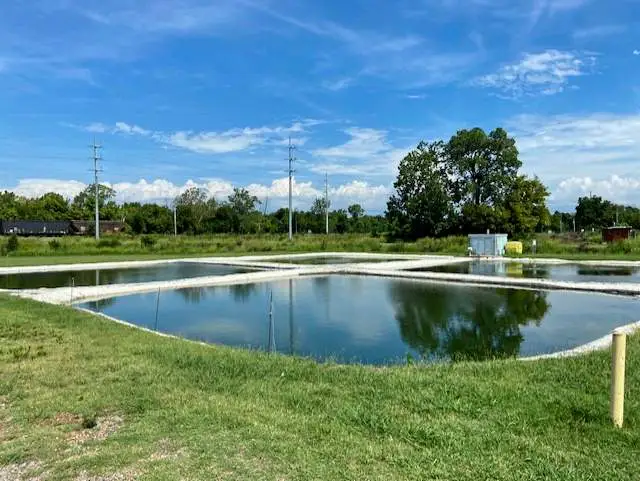Evaporation ponds, also known as solar evaporation ponds or salt pans, are shallow basins designed to allow water to evaporate, leaving behind dissolved solids such as salts or other materials. They have a variety of applications across industries and environmental management. From ancient times, evaporation ponds have been used to harvest salt from sea water, but in relatively modern times, they are also used to extract mining residues, to treat polluted water and to isolate contaminants of many kinds.
There is a difference between a brine pond and an evaporation pond, although the two terms are often conflated in everyday use. The principal difference is the purpose of the pond: an evaporation pond is employed for the solid material to be extracted, while a brine pond is often only used temporarily, to allow some evaporation to shrink the volume of liquid, condensing the brine for transport to further treatment.
See our articles on Brine Disposal and Storage and on Salt Evaporation Ponds for a more detailed look at each kind of pond, and to learn the main differences between them. It’s useful also to review the types of impermeable geomembrane liners that are commonly used to line many of these ponds, which often require quite large pond liners, and frequently require stringent containment.
In general, evaporation ponds are most typically used for salt production, harvesting from seawater in coastal areas where enough land exists to create the shallow pans, and from naturally salty bodies of water (such as the Great Salt Lake in Utah). Not all salt is destined for human consumption: some evaporation ponds are designed for producing salts used in chemical industries, such as sodium chloride, magnesium sulfate, or potassium chloride.
A significant portion of the water in our modern societies is a form of wastewater, requiring treatment, purification or some other kind of management. Industrial effluent from industries such as mining, petroleum and manufacturing use evaporation ponds to treat wastewater by concentrating contaminants through evaporation. These are probably better described as brine ponds if the purpose is to condense the liquid for further transport, rather than to evaporate the liquid to manage the solids.
Agricultural runoff often requires containment or evaporation basins to prevent the discharge of salts, fertilizers or other contaminants into freshwater systems. Sometimes these ponds are created as permanent ecosystems that transform contaminants biologically, as well as hosting fish, birds and other wildlife.
Desalination plants usually need to manage the concentrated brine byproduct of the desalination process, and this again may be used purely to extract the salt through a system of evaporation ponds, or to contain and condense the brine through partially evaporating the water.
Mining operations use evaporation ponds to recover valuable minerals such as lithium, potash and other salts from brines. Alternately, the environmental impact may be the leading motivator, such as with acidic water from mines that is held in a containment basin to reduce its volume and concentrate the dissolved metals for recovery or easier transport for disposal.
Environmental remediation through the use of evaporation ponds can range from site cleanup of contamination to wetland management. Contamination may involve polluted water, or water may become polluted as part of the cleanup (or naturally from rainwater falling on contaminated ground). And on a loftier note, some evaporation ponds can be designed to mimic natural evaporation cycles to restore wetland environments.
Evaporation ponds can support specialized microorganisms, such as halophiles, that thrive in saline environments, providing insights for scientific research. And some evaporation ponds serve as habitats for birds and other wildlife (monitoring and testing must be done to manage potential toxic build-up).
Aquaculture turns lemons into lemonade by managing water salinity and evaporating the excess water in shrimp and fish farming. And specialty and high-end culinary salts, such as fleur de sel, are often produced using evaporation ponds.
Evaporation ponds help scientists study evaporation rates and the impact of climate on water bodies, while experimental evaporation ponds are sometimes used in solar thermal energy systems to store heat using concentrated salts.
They are used in controlled studies to better understand water loss and salinity impacts in various environments. And in some regions, evaporation ponds are designed to produce colorful patterns due to varying mineral concentrations, making them attractions for tourism or art projects. They are occasionally adapted for activities such as salt flat racing or walking tours. Evaporation ponds are cost-effective and sustainable in sunny, arid regions, but they require careful design and monitoring to prevent environmental issues such as soil contamination, wildlife poisoning, or unintended salt drift.


